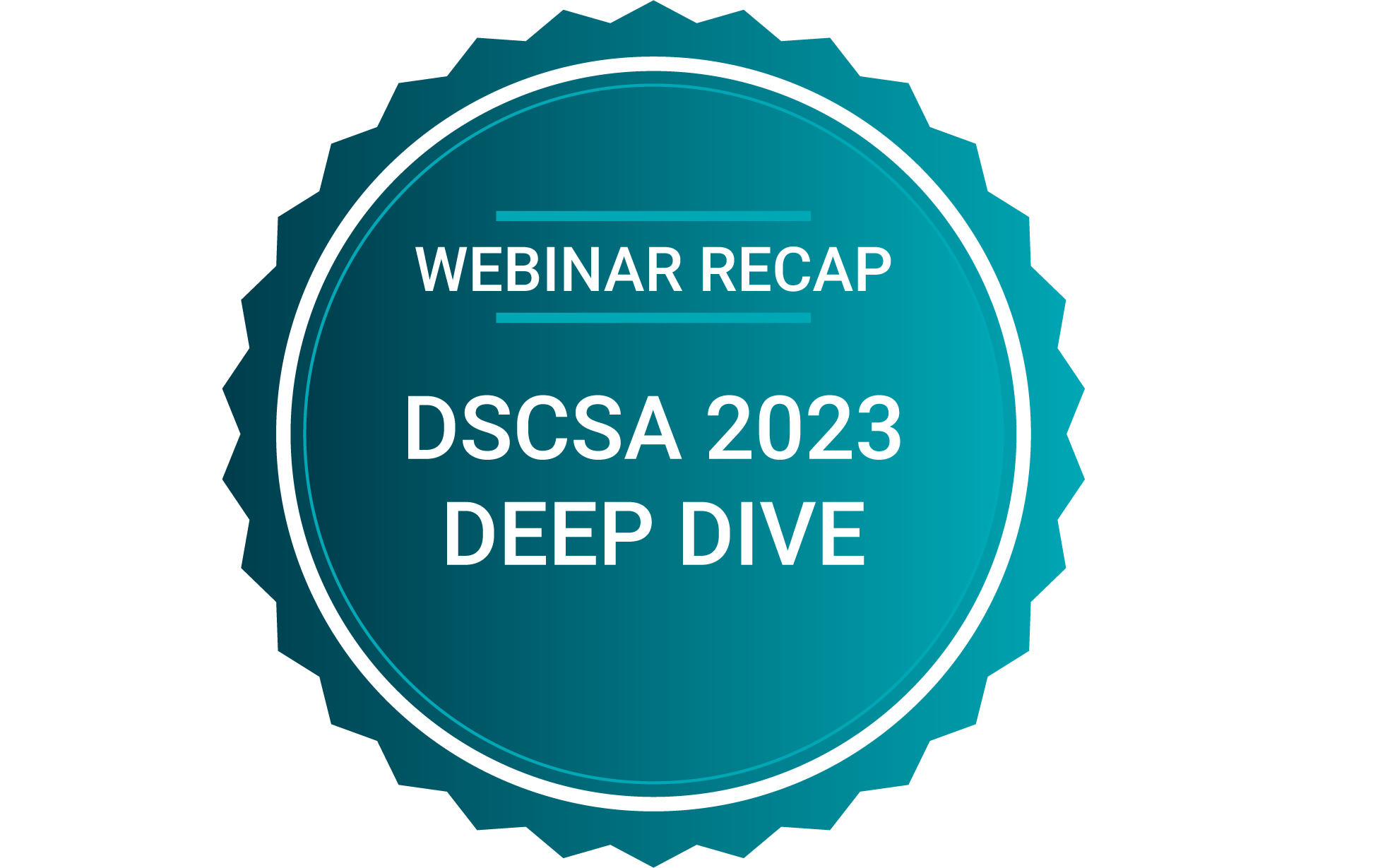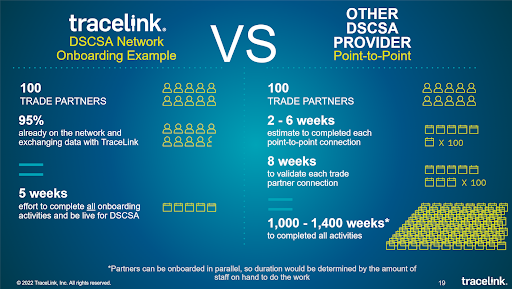Table of contents

DSCSA 2023 isn’t just about sending EPCIS transactions—its item-level traceability requirement will require a tremendous shift from all members of the pharmaceutical supply chain. Not only will they need to exchange a tremendous amount of data with their direct and indirect trading partners, they’ll need to be able exchange a high volume of data seamlessly.
The latest webinar in our ongoing DSCSA webinar series, “Reduce DSCSA Costs and Accelerate Supply Chain Digitalization with a Network Approach,” dove into the costs associated with the orchestration of this data. While making this shift will require some new capabilities, the good news is that this investment in DSCSA compliance now can help accelerate your supply chain digitalization process and set your supply chain up for future success.
Here are the key takeaways:
- Point-to-point architectures make DSCSA compliance difficult. Item-level traceability requires several different types of transactions, including serial number requests, GTIN master data, and investigation verification. On top of that, it requires transactions between hundreds or even thousands of trading partners. Building and maintaining custom integrations at that scale costs a tremendous amount of time and money and also introduces substantial risk. All this integration work can cost a midsize manufacturer $2 million and a midsize pharmacy $500,000.
- A network-based approach reduces integration costs and offloads time-consuming work. TraceLink introduces a unique network-based approach to exchanging data with your partners. With all members of the pharmaceutical supply chain connecting via a shared platform, you no longer need to worry about configuring B2B integrations, aligning data formats, or performing ongoing maintenance. Plus, TraceLink provides support for your partners so you don’t need to perform tech support for them—you can focus on your supply chain.
- Investing in item-level traceability fuels supply chain digitalization and innovation. DSCSA requirements will continue to evolve, even after the major milestone in November 2023. With TraceLink, organizations can achieve benefits that extend beyond the standard compliance requirements. This includes everything from managing DSCSA exceptions more effectively to rapidly executing digital recalls and predicting drug shortages before they impact patients.
As you consider your path to DSCSA compliance, it’s important to evaluate the size of your network, how quickly you want to go live, and the total cost associated with integrating to your authorized trade partners. TraceLink offers a novel approach, purpose built for scaling information exchange across growing supply networks and leveraging this information to digitalize supply chain processes for further operational benefits.

Interested in learning more about DSCSA 2023 from a panel subject matter experts and your industry peers? Sign up for our DSCSA webinar series today—there are tracks for both manufacturers and distributors or pharmacies and dispensers.
You can also watch the on-demand recording to learn more DSCSA compliance costs, the value of a network-based approach, and the importance of supply chain digitalization.






